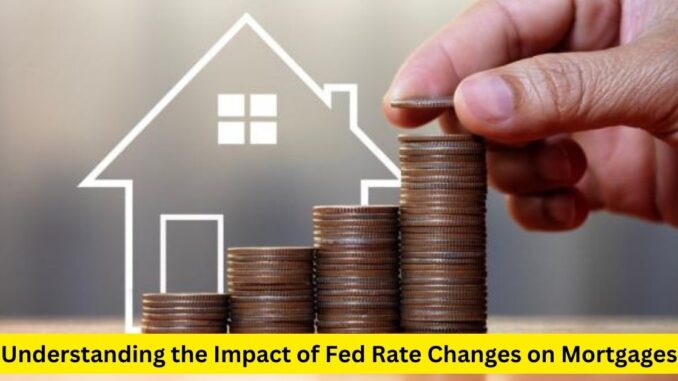
The Federal Reserve, often referred to as the Fed, plays a pivotal role in shaping the economic landscape of a country. One of the significant tools in its arsenal is the adjustment of the federal funds rate, which has a profound impact on various financial aspects, including mortgages. Understanding how Fed rate changes influence mortgages is crucial for homeowners, potential buyers, and investors alike.
**1. Interest Rates and Mortgage Costs:
When the Fed raises or lowers the federal funds rate, it directly affects interest rates. Mortgage rates tend to follow suit, albeit not in a one-to-one correlation. Generally, when the Fed raises rates, mortgage rates also increase, making it more expensive for borrowers to finance their homes. Conversely, a Fed rate cut often leads to lower mortgage rates, making homeownership more affordable and enticing for potential buyers.
**2. Refinancing Opportunities:
Fed rate cuts create a favorable environment for homeowners looking to refinance their mortgages. Lower interest rates mean reduced monthly payments for those who refinance, freeing up funds for other investments or expenditures. Homeowners often rush to refinance when rates drop, taking advantage of the opportunity to secure a more budget-friendly mortgage.
**3. Housing Market Dynamics:
Fluctuations in mortgage rates driven by Fed rate changes influence the overall housing market. Lower rates stimulate housing demand, as more people can afford to buy homes or upgrade to larger properties. This increased demand can drive up home prices in the short term. Conversely, higher rates can dampen demand, leading to stabilization or even decline in property prices, creating a more balanced market for both buyers and sellers.
**4. Consumer Spending and Economic Activity:
Mortgage rates impact not only the real estate sector but also consumer spending and the broader economy. Lower mortgage rates mean reduced monthly payments, leaving homeowners with more disposable income. This extra money often translates into increased consumer spending, boosting economic activity in various sectors. Conversely, higher mortgage rates can constrain consumer spending, potentially slowing down economic growth.
**5. Investor Behavior:
Changes in mortgage rates driven by Fed rate adjustments influence investor behavior in the real estate market. Investors closely monitor interest rate trends to make strategic decisions. Lower rates may encourage real estate investments, leading to increased property development and housing market expansion. Conversely, higher rates can deter investors, leading to a slowdown in property investments and development projects.
In conclusion, the Federal Reserve’s decisions regarding the federal funds rate have a far-reaching impact on the mortgage market and, by extension, the overall economy. Homeowners, buyers, and investors must stay informed about these changes to make informed decisions regarding their mortgages and real estate investments. Being aware of how Fed rate adjustments influence the housing market empowers individuals to navigate the dynamic landscape of mortgages and housing opportunities more effectively.
Leave a Reply